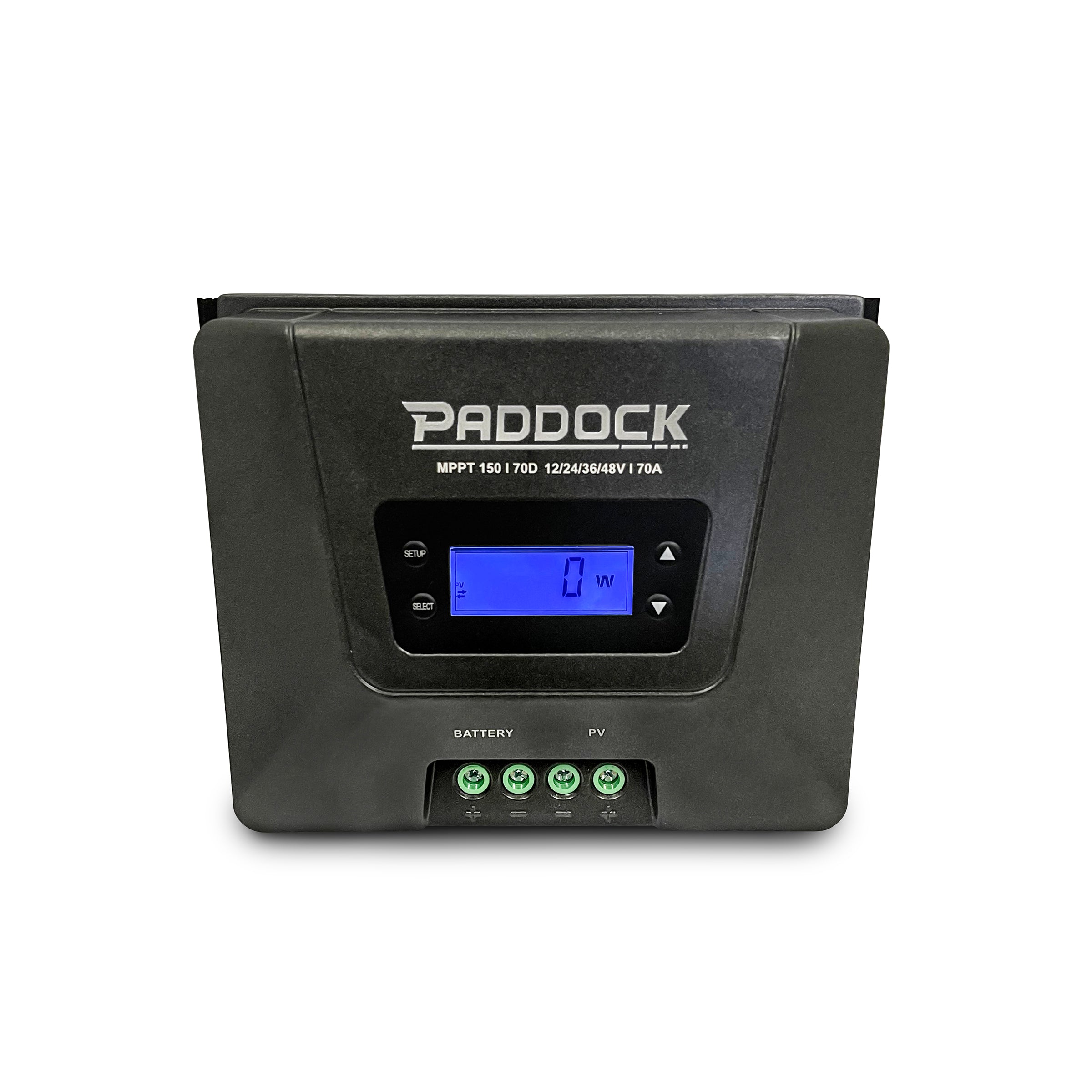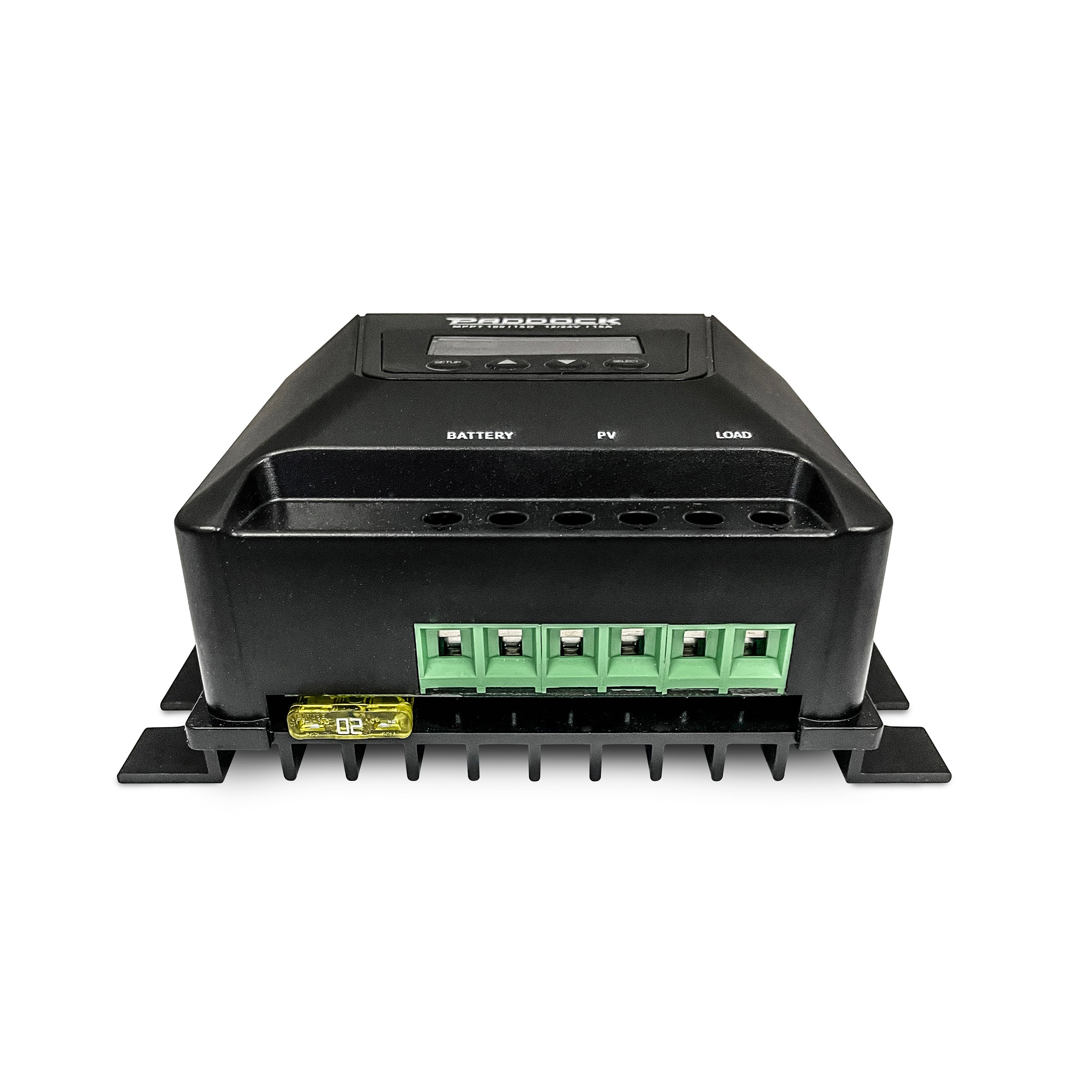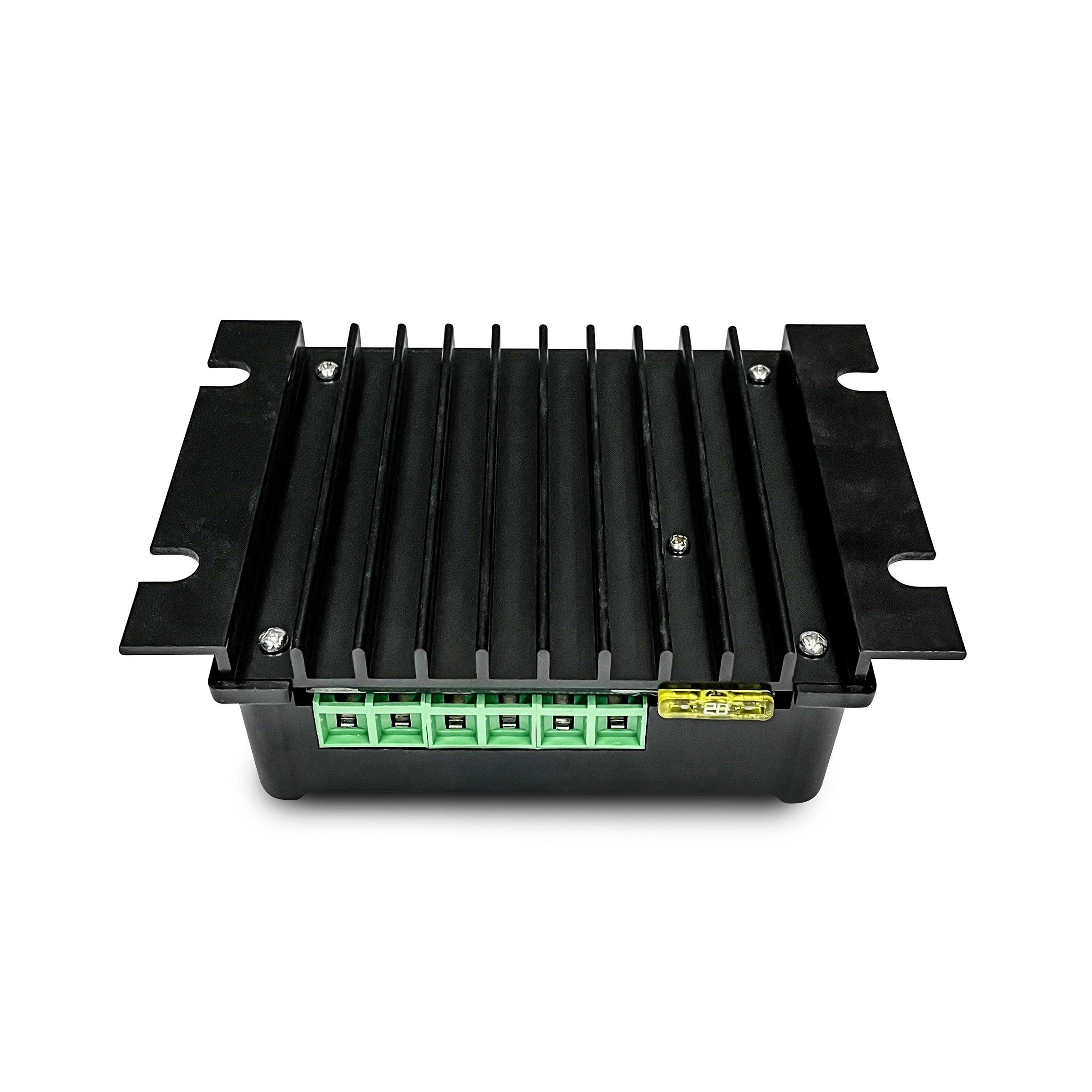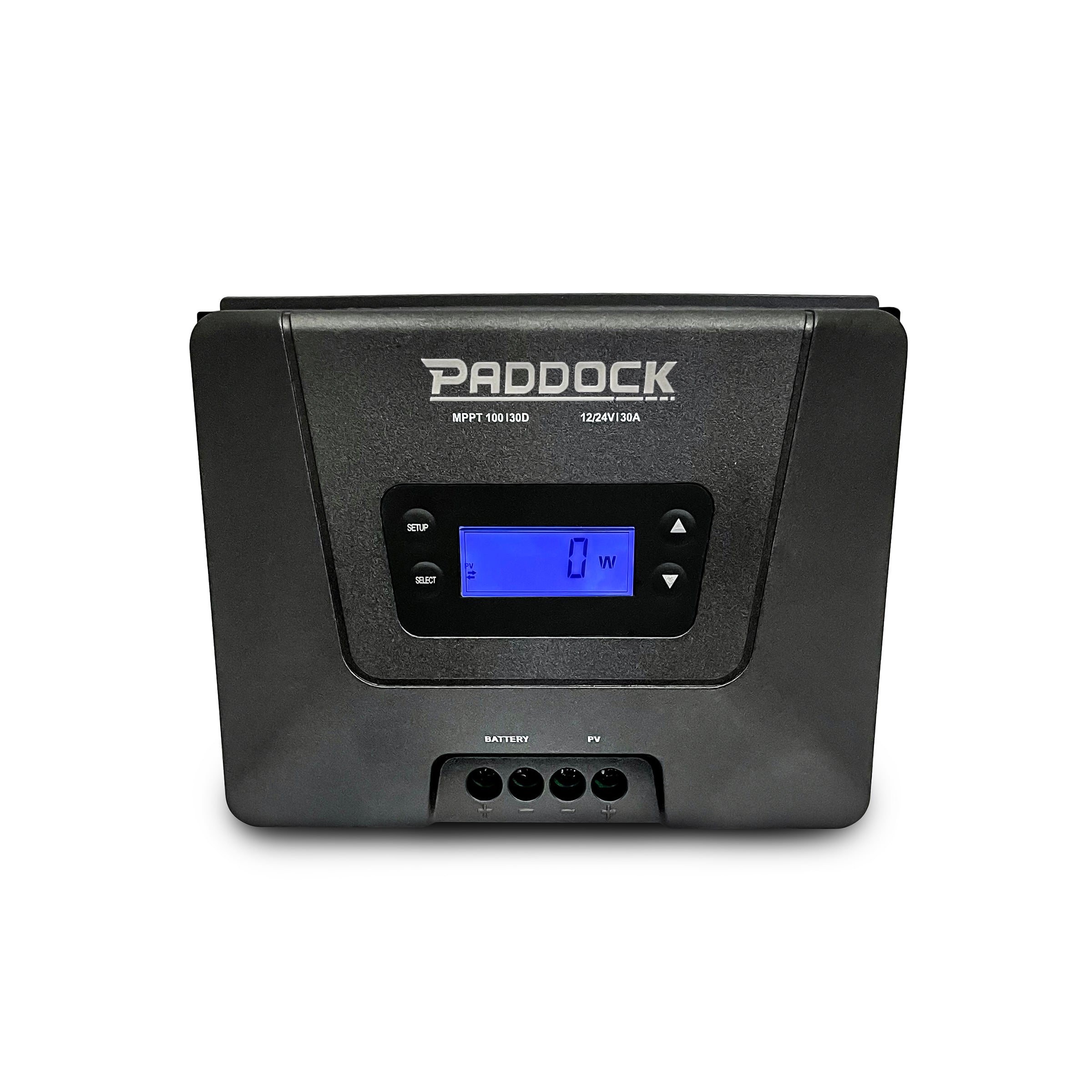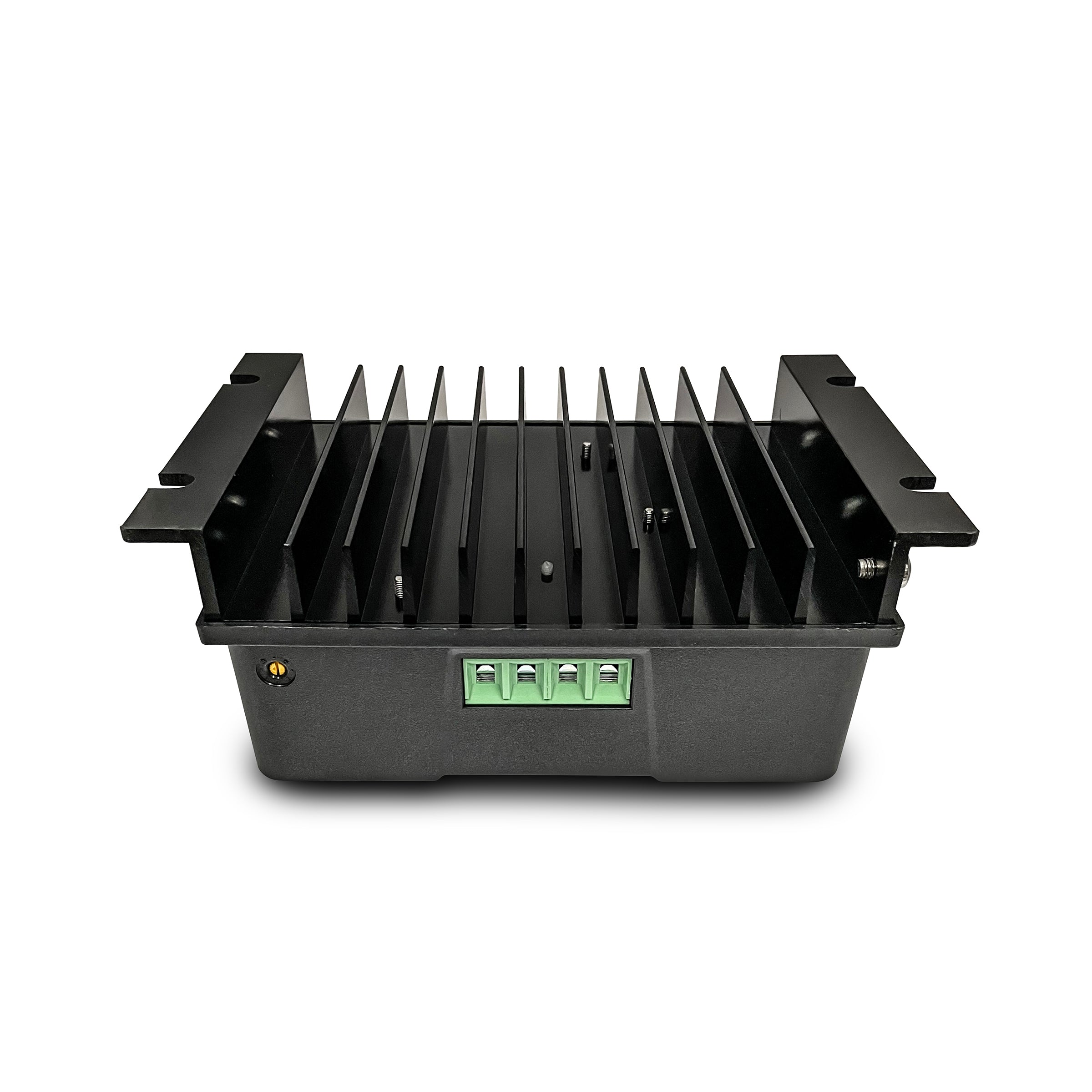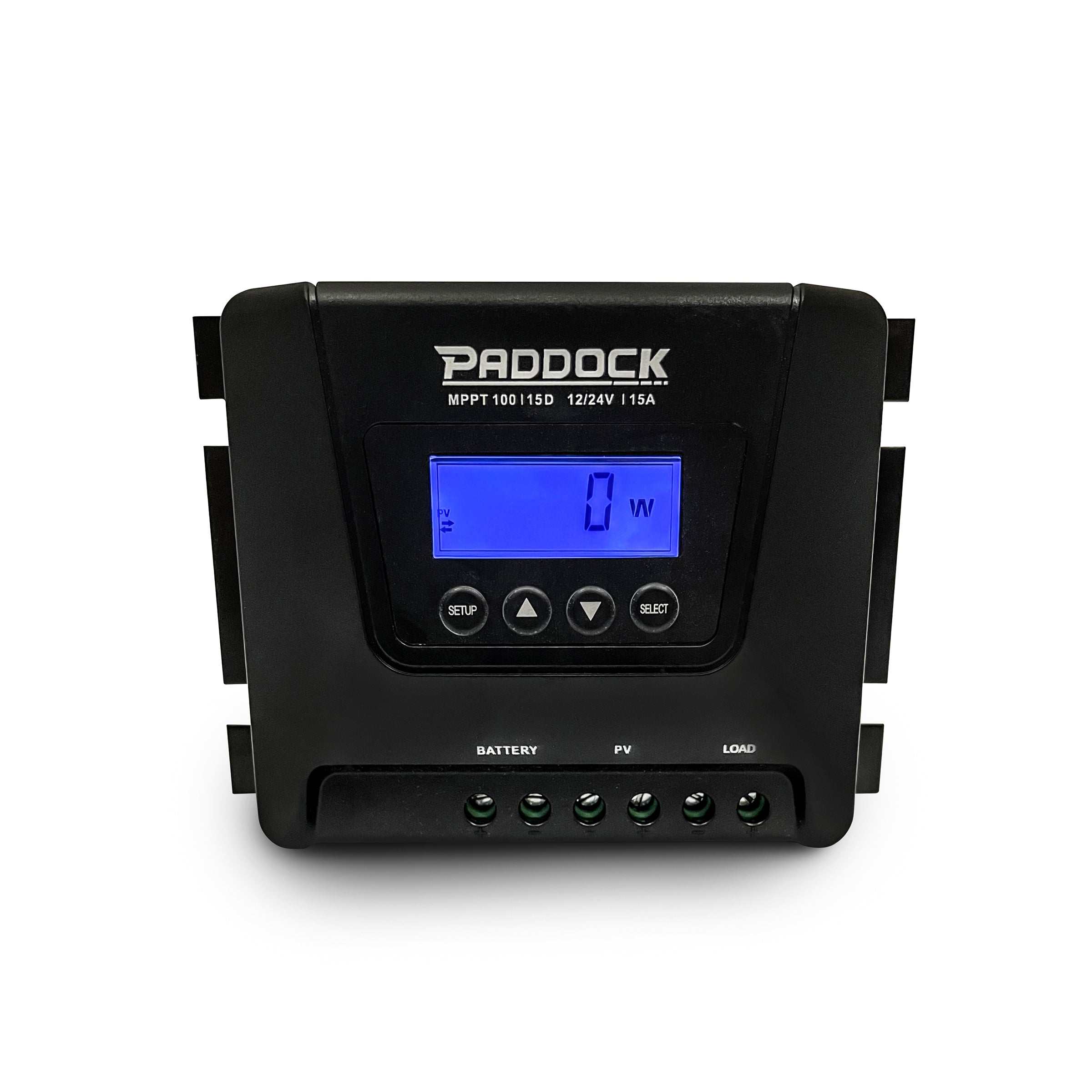
Paddock MPPT Solar Charge Controllers.
Description
A solar charge controller is vital if you're planning to connect a solar panel to a battery. These MPPT charge controllers are exceptional quality and come with a LCD information screen making it easy for the user to check the systems performance. A quality charge controller will ensure higher efficiency in the conversion of solar energy into useable power and will also help protect your batteries so they last longer and perform better.

Maximum Power Point Tracking (MPPT) Solar Charge Controller
Paddock offer a range of well tested and proven MPPT charge controllers which are ideal for the Australian environment. Charge controllers are necessary whenever a solar array is being connected to a battery or bank of batteries. The charge controller ensures the batteries receive the power at the correct voltage and that sensitive equipment powered from the battery is not damaged.
- Clear LCD display provides a simple and informative user interface
-
MPPT technology ensures the highest conversion efficiency of solar energy to useable power
-
CE and RoHS compliant
-
High powered with input voltage options for 100V and 150V panel arrays
-
Range of products to suit most user requirements
When it comes to charge controllers, it pays to have a basic understanding to ensure you're getting a product that performs and uses the best technology available. The market is flooded with cheap and somewhat nasty PWM, Pulse Width Modulation charge controllers. These controllers reduce the current to your battery as the battery voltage rises. This method of controlling the charge essentially costs you efficiency and means you're not getting the most from your expensive solar panels.
Good quality charge controllers like the Paddock range use MPPT technology which allows the solar panel to supply its power at the peak production point. This means you are always getting the most from the solar array, even on overcast days. The Paddock units offer Ultra-fast MPPT technology which can improve the energy harvested by up to 30% over PWM controllers and 10% improvement over slower MPPT units.
Paddock MPPT charge controllers efficiencies can exceed 98% and can do this without moving parts such as a cooling fan. Each units full rated output current can be achieved at temperatures up to 40°C which makes them perfect for the hot Australian conditions. Temperature deratings exist up to their maximum operating temperature of 60°C.
Compatible Battery Types
The user can adjust the controller via the LCD display to suit their battery type. A range of charge programs exist with the popular battery types being AGM, GEL, Flooded and Lithium which are all compatible with the Paddock controller.
Selecting A Charge Controller
Charge controllers come in a range of sizes and ratings such as 100/15, 100/30, 100/50 and 150/70. The first number, for example 100, is the maximum voltage you can input to the charge controller. Having a charge controller that allows up to 100V input, allows for more of your solar array to be wired in series rather then parallel. Wiring in series will increase the voltage from your solar array which feeds to your charge controller. Running at higher voltages has a range of benefits including lower transmission line losses, the ability to run small gauge wire plus the ability to still generate power on over-cast days.
The second set of numbers, for example 15, is the rated amperage the charge controller can output to your battery bank. So the charge controller is essentially sized to your solar array. For example, if you have a 1,000 watt solar array connected to a 12V battery bank, you would not use a 100/15 controller as the current from the controller would be capped at only 15A. Instead you'd be better to look at something that can output a much higher amperage such as the 150/70.
Increasing your battery bank voltage allows for smaller charge controllers to be used and this should be considered where the application allows for it. The Paddock controllers can run at a range of voltages with some models accepting up to 48V input.
Functionality via a LCD display and Data Logging
One of the many great features of the Paddock charge controllers is the inbuilt LCD screen. Users can quickly access important information scrolling through the menus with additional information including some data logging capability captured in the 30 day history. Again the historical information can be accessed and viewed from the simple LCD user interface without the need to connect a computer or 3rd party device.
The following helpful information is available for users to view in real time from the LCD display with 30 days of data captured;
- Panel Power
- Panel Voltage
- Yield Today (kWh)
- Charge state (Off/Bulk/Absorption/Float)
- Battery Current
- Battery Voltage
Additional information can be viewed with reduced data logging capability;
- Total yield
- Max. panel voltage
- Max. battery voltage
- Min. battery voltage
- Yield
- Max Power
- Bulk time
- Absorption time
- Float time
Installing a charge controller
A high quality charge controller should have a quality installation to ensure the unit performs for the life of the solar panels. It is recommended the charge controller be installed indoors or inside a weatherproof enclosure / cabinet. Good air flow around the controller will ensure the unit remains cool and runs at its peak efficiency.
| Specifications | SMPPT100/15 | SMPPT100 /30/50 | SMPPT150/70 |
|---|---|---|---|
| System Voltage | 12V/24V Auto Select | 12V/24V Auto Select | 12V/24V/48V Auto Select |
| Max. Output Current |
15A |
30A / 50A | 70A |
|
Max. PV Power 12V |
200W |
100/30 - 440 W {MPPT range 15V to 80V) 100/50 - 700 W {MPPT range 15V to 70V resp. 95V) |
1,000W |
| Max. PV Power 24V |
400W |
100/30 - 880 W {MPPT range 30Vto 80V) 100/50 - 1400 W {MPPT range 30Vto 70V resp.95V) |
2,000W |
|
Max. PV Power 48V |
N/A | N/A | 4,000W |
| Max. PV Open Circuit Voltage |
100V |
100V | 150V |
| Max. Efficiency |
98% | 98% | 98% |
| Self Consumption | 20mA |
20mA | 20mA |
|
Charge Voltage (Default) |
Absorption 14.4V / 28.8V (adjustable) Float 13.8V / 27.6V (adjustable) |
Absorption 14.4V / 28.8V (adjustable) Float 13.8V / 27.6V (adjustable) |
Absorption 14,4 / 28,8 / 57,6 V (adjustable) Float 13,8 / 27,6 / 55,2 V (adjustable) |
| Charge Algorithm | Multi-stage adaptive |
Multi-stage adaptive | Multi-stage adaptive |
| Temperature Compensation |
-16 mV / °C resp. -32 mV / °C | -16 mV / °C resp. -32 mV / °C | -16 mV / °C resp. -32 mV / °C |
| Low voltage load disconnect / reconnect | Adjustable from preset values or Battery Life algorithm |
Adjustable from preset values or Battery Life algorithm | Adjustable from preset values or Battery Life algorithm |
| Protection |
Battery reverse polarity (fuse)/Output short circuit / Over temperature | Battery reverse polarity (fuse)/Output short circuit / Over temperature | Battery reverse polarity (fuse, not user accessible) PV reverse polarity/ Output short circuit/ Over temperature |
| Operating Temperature |
-30 to +60°C (full rated output up to 40°C) | -30 to +60°C (full rated output up to 40°C) | -30 to +60°C (full rated output up to 40°C) |
| Humidity |
95%, non-condensing | 95%, non-condensing | 95%, non-condensing |
| Terminals (fine/single wire) | 6mm2 /AWG10 | 13mm2 /AWG6 | 35mm2 /AWG2 |
| Protection Catagory | IP43 (electronic components) IP22 (connection area) |
IP43 (electronic components) IP22 (connection area) |
IP43 (electronic components) IP22 (connection area) |
| Weight | 0.5kg |
1.25kg / 1.6kg |
3kg |
| Dimensions | 136 x 98 x 55 mm | 186 x 125 x 83 mm | 248 x 178 x 103 mm |
| Safety Standards | EN/IEC 62109 | EN/IEC 62109 | EN/IEC 62109 |
| Warranty | 2 yrs | 2 yrs | 2 yrs |


